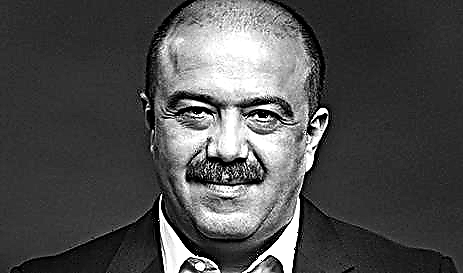We all have secrets. But there is a difference between a little secret and a huge, amazing secret that you plan to keep until the last day of your life. But many famous people did just that.
Here are the top 10 greatest secrets, the solution to which their authors took with them to the grave.
10. The immortal lover of Beethoven
 The famous composer Ludwig van Beethoven died a lonely bachelor in 1827, leaving behind not only many famous musical works, but also a romantic secret.
The famous composer Ludwig van Beethoven died a lonely bachelor in 1827, leaving behind not only many famous musical works, but also a romantic secret.
Beethoven, according to researchers of his biography, fell in love several times during his life. But one unknown woman whom he called his “Immortal Beloved” seems to outshine everyone else. A passionate love letter to this mysterious woman was discovered among the composer's papers shortly after his death. It was never sent.
The couple’s relationship was apparently difficult, as Beethoven asked her lover: “Can't you change the situation in which you are not completely mine and I am not wholly yours?”
There are many theories about who this letter is dedicated to, but no one has yet found the exact clue. According to the most popular theory, the most likely candidate is Anthony Brentano, a married woman whose family was close to Beethoven. She was a close friend of the composer. He dedicated one of his works to her - Variations on the Theme of Diabelli.
9. The Stradivarius Secret
 Instruments created by Antonio Stradivari, including not only violins, but also guitars and violas, cello and even one harp, are still considered unsurpassed in sound. Their sound is like a gentle and high female voice.
Instruments created by Antonio Stradivari, including not only violins, but also guitars and violas, cello and even one harp, are still considered unsurpassed in sound. Their sound is like a gentle and high female voice.
Some attributed this to a unique glue and varnish, the secret of the manufacture of which Stradivarius kept a closely guarded secret, as well as special wood, supposedly taken from the wreckage of Noah’s ark.
Researchers are convinced that Stradivarius used the highest quality wood: spruce for the soundboard, maple for the bottom of the violin, and chocks were cut into sectors to make “orange slices”. In addition, each deck had a unique pattern of holes and a special contour of external lines.
But the cremonsky genius took the recipe of varnish and the subtleties of creating his songwriting with him to the grave.
8. Man float
 Angelo Faticoni, born in 1859, did not drown in the water. He discovered his "superpower" in early childhood, and became a member of numerous experiments.
Angelo Faticoni, born in 1859, did not drown in the water. He discovered his "superpower" in early childhood, and became a member of numerous experiments.
Scientists tied heavy objects to Angelo's body, but he stubbornly refused to sink. One day he crossed the Hudson River while tied to a chair, while holding a heavy load.
Angelo Faticoni promised to reveal his secret one day, but died unexpectedly in 1931, taking the secret of amazing buoyancy to the next world.
7. All the secrets of Harry Houdini
 The legendary illusionist put the envelope with the secrets of his greatest tricks in the safe and ordered to open it 100 years after his death.
The legendary illusionist put the envelope with the secrets of his greatest tricks in the safe and ordered to open it 100 years after his death.
By his will, the safe was opened in the presence of the public at the right time ... and was empty. Houdini never explained the secrets of his amazing views.
6. The Secret of Coral Castle
This stone structure was built by Edward Lidskalnin, an eccentric sculptor and engineer who emigrated to the United States from Latvia in the early 20th century.
“And what is the secret?”, The reader may ask. The fact is that Leedskalnin built the entire castle alone! In some unthinkable way, he was able to move and raise limestone megaliths, weighing up to 30 tons. In addition, he did not use the mortar - only the correct location of each part keeps the entire structure together.
During his lifetime, Edward claimed that he knew the secret of how the Egyptian pyramids were built, but he never shared the clue to this secret. Many years after his death, one of the elements of the castle was broken, and the engineers had to use a construction crane to move it.
5. The man who cracked the "invulnerable" German code
 In 1940, the Swedes connected to German communication lines passing through the country on their way to Norway, and were able to crack the code of one of the most advanced cryptological devices of the time. It was called T52, or "Geheimschreiber." This device was larger and more complex than the famous Enigma, and transmitted only important and secret messages.
In 1940, the Swedes connected to German communication lines passing through the country on their way to Norway, and were able to crack the code of one of the most advanced cryptological devices of the time. It was called T52, or "Geheimschreiber." This device was larger and more complex than the famous Enigma, and transmitted only important and secret messages.
At first, the Swedes were confused by the data coming from the T52, and called them "extremely unreadable." It was then that Arne Burling, a professor of mathematics, entered the game. In just two weeks, he was able to crack the T52 cipher. How he did this remains unclear. When asked about this by Burling, he replied: "The magician does not reveal his secrets." After 46 years, he died, leaving his mystery unsolved.

Thanks to the ingenuity and ingenuity of Arne Berling, the Swedes were able to know in advance Hitler's plans for the invasion of Russia.
4. Maurice Ward and his indestructible plastic recipe
An English inventor named Maurice Ward created a heat-resistant plastic that could withstand temperatures of over 10,000 degrees Celsius and was more resistant to impact force than a bomb dropped on Hiroshima.
When asked how he managed to create such a miracle, Maurice replied that this plastic was made from "21 organic polymers, copolymers and a small amount of ceramics." However, these words were clearly not enough for scientists to repeat the plastic formula.
Having named his brainchild Starlite, Ward decided to sell it to those who might be interested in him. However, he was then afraid that the company that had bought Starlite might start to profit from his invention without paying any remuneration to Ward himself.
In 2011, Maurice Ward passed away, taking Starlite's secret with him.
3. Nikola Tesla and wireless electricity
Nikola Tesla was the man who discovered that alternating current was much more practical and safe than Edison's direct current. He is also credited with inventing the Tesla coil, a radio transmitter and fluorescent lamps, and by the beginning of the 1900s he was considered America's greatest electrical engineer.
But, despite all his merits, Tesla could not complete what would be his main achievement - to provide free wireless electricity to the whole world. The implementation of such an ambitious project, which ran from 1901 to 1917, was hindered by the financial issue. The main investor J.P. Morgan decided to abandon further sponsorship of Tesla. And the inventor’s patents expired in 1905 and no longer brought him so much money that he had enough to build a tower.
When Tesla died in 1943, the secret of wireless electricity, a useful invention that was not given a go, disappeared with him.
2. Ivan the Terrible Library
 Firefighters are looking, police are looking for ... Who just did not look for the famous library of Ivan the Terrible, which contained a huge number of Latin, Egyptian and Greek books and manuscripts. It once belonged to the Byzantine emperors, and came to Russia as a dowry of Princess Sophia Paleolog, who married Ivan III.
Firefighters are looking, police are looking for ... Who just did not look for the famous library of Ivan the Terrible, which contained a huge number of Latin, Egyptian and Greek books and manuscripts. It once belonged to the Byzantine emperors, and came to Russia as a dowry of Princess Sophia Paleolog, who married Ivan III.
Ivan the Terrible (Ivan IV) was the last tsar to own the library. He was very proud of the famous collection and took measures to keep its whereabouts a secret. After his death, the whereabouts of the library was lost.
Some researchers believe that it did not exist at all, or it was lost during the Time of Troubles. And there are as many as 60 versions of the whereabouts of the library of Ivan the Terrible, if it still survived.
1. The main issue of life, the universe and in general
Our selection is headed by a secret, the answer to which was given, but, perhaps only in order to further irritate the fans.
In his famous Hitchhiker's Guide to the Galaxy, Douglas Adams provides an incredibly simple and funny answer to a question that could solve all the problems of the universe. According to the author, the answer is 42.
No one knows why Adams chose this number, but true fans of the trilogy spent years trying to delve into the clue. Was it just a joke? Did Adams use a random number? Or does it have any hidden meaning?

“The answer to this is very simple. It was a joke. It had to be a number - an ordinary, small number - and I chose that. The binary representation, the hexadecimal number system, the Tibetan monks - all this is complete nonsense. I sat at my desk, staring at the garden, and thought: "42 will do." And printed it. That's the whole story. ”- Adams once said in his USENET conference. But how now to find out if he was not deceiving?












